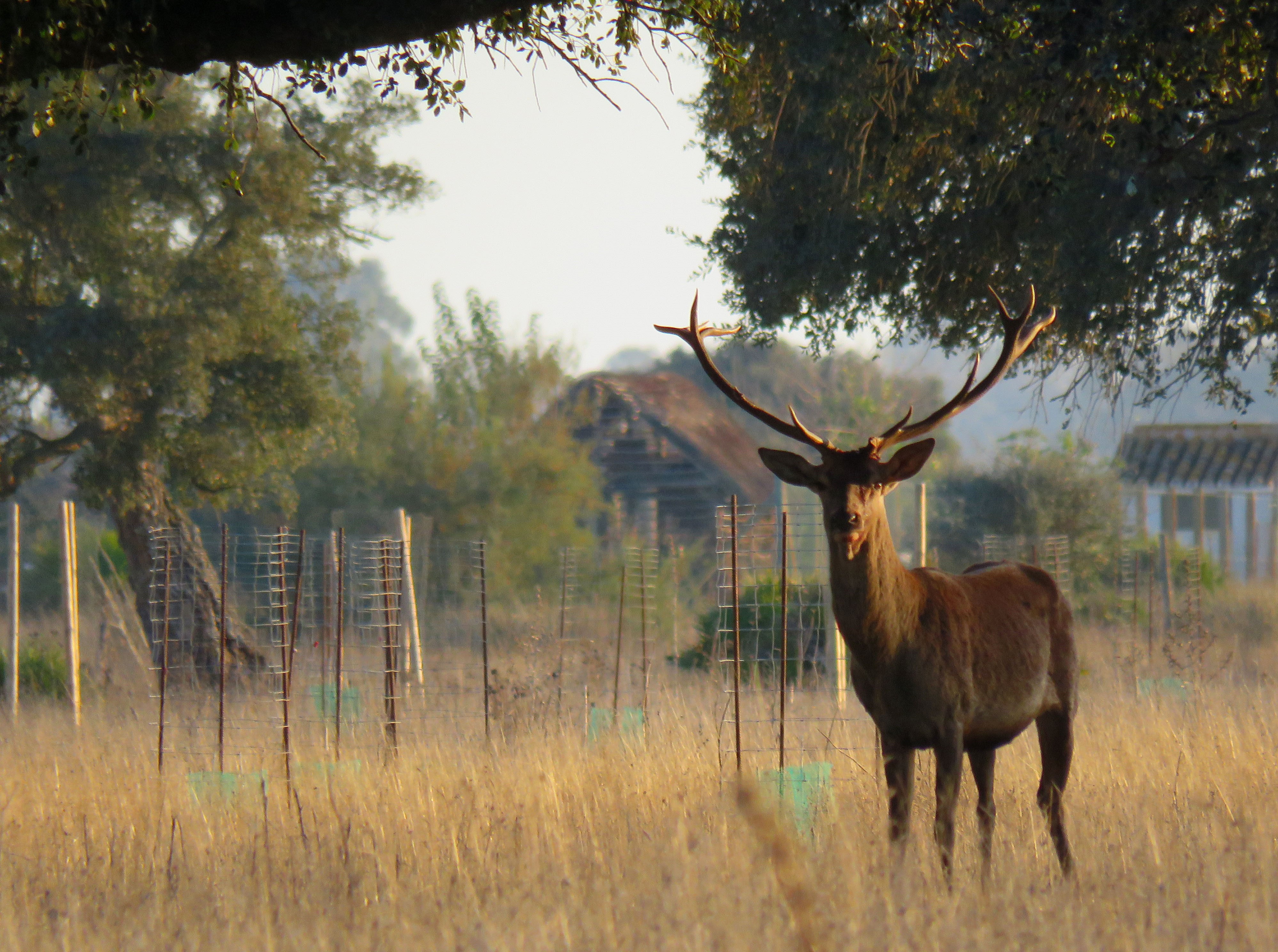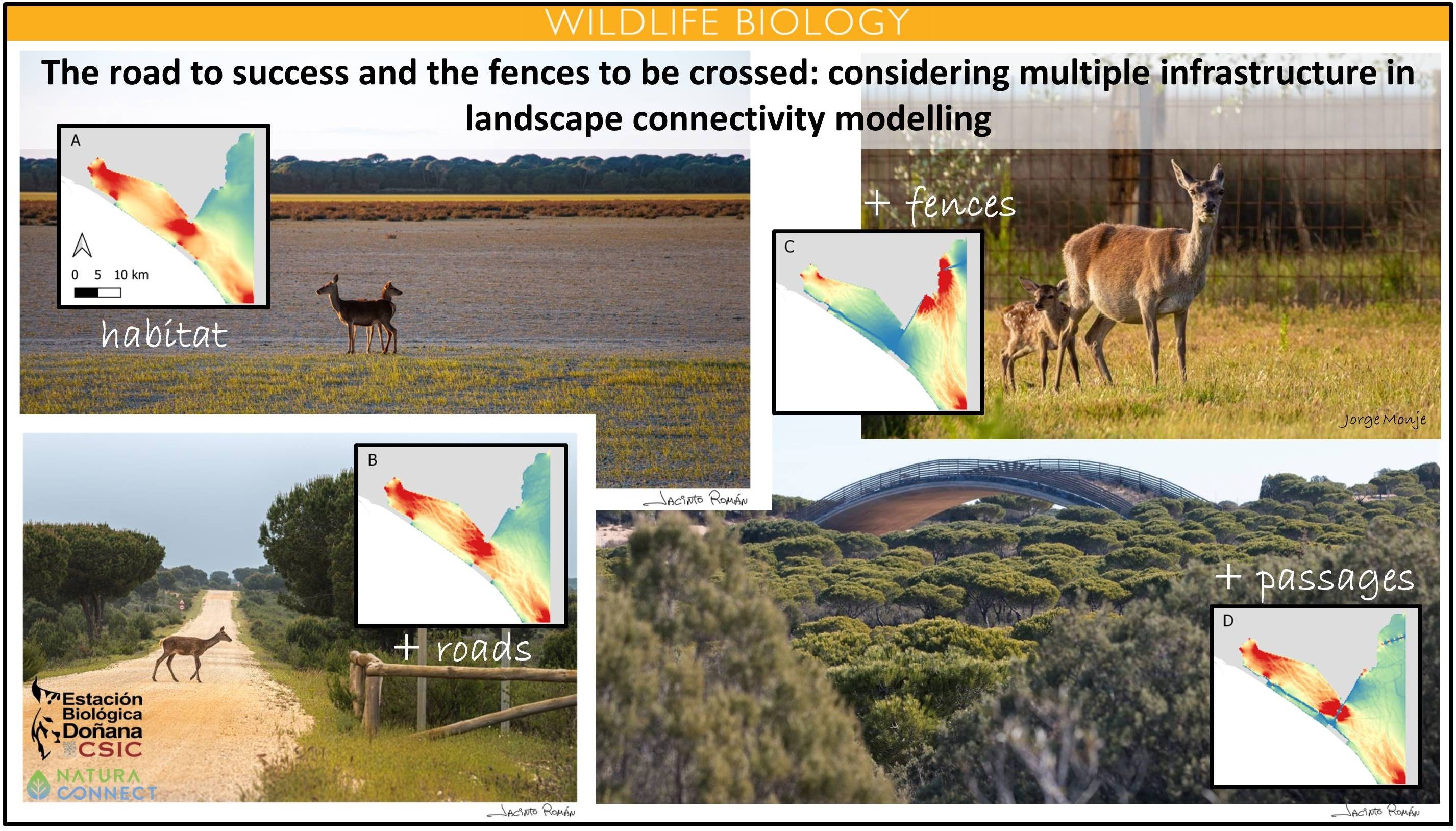Study analyzes the effect of roads, fences and passages on wildlife connectivity in a protected area
Connectivity was affected by the use of fences but it is improved by the addition of wildlife road-crossing structures.

Linear infrastructures, such as roads or fences, represent barriers to the movement for many species, reducing the connectivity of the landscapes in which they reside. In a new study, researchers at the Doñana Biological Station – CSIC have compared several scenarios of landscape connectivity scenarios to determine the importance of considering the combined effects of multiple types of barriers. For this study they have utilized presence data of red deer and wild in the Doñana Biosphere Reserve.
Habitat fragmentation impairs migratory movements and adaptation to global change. It also causes that populations become increasingly isolated, leading to a loss of genetic diversity and ultimately to local extinctions. Analyzing the effects of a single linear structure, such as roads, may not be sufficient to understand how species really move through a landscape. For this reason, the scientific team wanted to analyzed the combined effects of several of these structures on wildlife connectivity.
The researchers have created four scenarios of structural connectivity throughout in Doñana, for each of the two species studied, the red deer and the wild boar, both species with a great abundance in the protected area. ”These two species are not threatened, but improving their connectivity would probably improve connectivity for many other species with simpler spatial requirements”, explains Marcello D’Amico, a researcher at the Doñana Biological Station – CSIC. “In addition, they are two species that interact with many others, either in a positive or negative way, so restoring their connectivity would imply recovering some functions and ecosystem services, but we should also consider mitigating the impacts associated with them”.
In the fist scenario, only environmental variables were evaluated, without considering roads, fences or passages. In the second scenario, researchers overlaid roads. When they analyzed the movement patterns in these two scenarios, they observed that red deers and wild boards mostly used the South and West sub-areas of the protected area, while the usage of the North sub-area was minimal.
When they added the presence of fences in the third scenario, movement pathways changed completely. Fences blocked potential usage of South and West sub-areas by ungulates. In this scenario, landscape connectivity was channelled from the South to North sub-areas, through El Rocío lagoon.
The final scenario considered ambiental variables, roads and fences with the addition of wildlife passages. In this scenario, red deers and wild boards predominantly utilized passages connecting the South and West sub-areas of Doñana, restoring movement patterns detected in the first and second scenario. The potential use would again be concentrated in the South and West sub-areas, while the North sub-area would no longer be used as frequently.
“Linear infrastructures should be placed in areas where they do not affect ecological corridors, specially in important areas for biodiversity such as Doñana. In fact, the study shows that connectivity is affected by the presence of roads and even more if we consider a second linear infrastructure, such as fences. These observations evidence the important impact of fences for the movement of species”, explains Marcello D’Amico. “However, results show that the situation is partially restored when wildlife crossings are added”.
This research work show how through the study of the combined effects of several types of infrastructures on connectivity, researchers can better understand how linear infrastructure can modify wildlife movement patterns, which helps to improve management in these areas.
The study was carried out as part of the NaturaConnect project, funded by the European Union’s Horizon Europe program, which aims to develop a Trans-European Network of Natural Areas (TEN-N), a system of natural and semi-natural areas connected through ecological corridors. The project brings together researchers from 22 institutions from 15 European countries. Doñana is one of the case studies on which NaturaConnect will focus especially, studying connectivity within the natural area but also with the protected areas of Sierra Morena and Portugal.

Reference:
Isla Botting, Fernando Ascensão, Laetitia M. Navarro, Maria Paniw, Zulima Tablado, Jacinto Román, Eloy Revilla, Marcello D'Amico. The road to success and the fences to be crossed: considering multiple infraestructure in landscape connectivity modelling. Wildlife Biology. https://doi.org/10.1002/wlb3.01187
CONTACT:
damico@ebd.csic.es